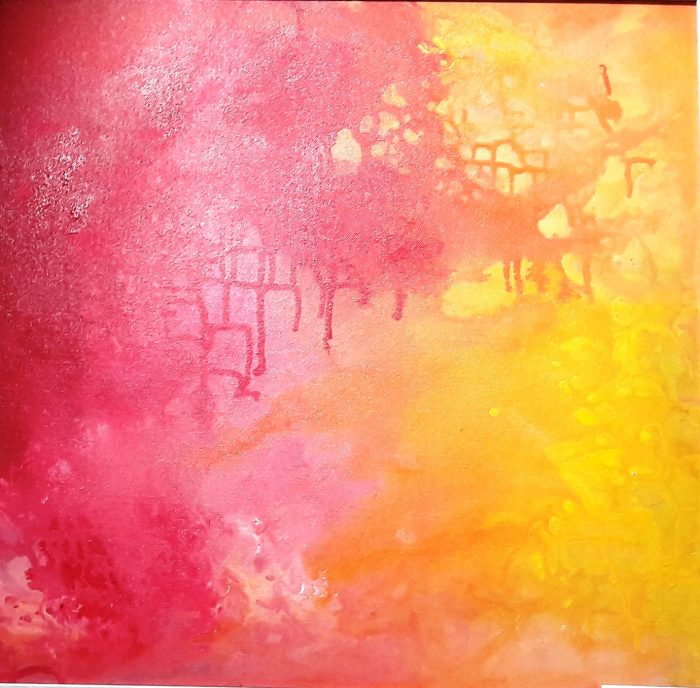Art therapy: Healing Through Art!
History and development
Art has always been used as a means of communication, self-expression, group interaction, diagnosis, and conflict resolution throughout the time in history. For thousands of years, various cultures and religions around the world have incorporated the use of carved idol, charms, several sacred paintings and symbols, during the healing process in totality.
The term “art therapy” was coined in 1942 by British Artist Adrian Hill, who discovered the healthy and lovely benefits of painting and drawing while recovering from tuberculosis himself. In the 1940s, several writers in the field of mental health began to describe their work with people in treatment as “art therapy.”
What is art therapy?
Art therapy does involve the use of amazing creative techniques such as drawing, painting, collage, colouring, or sculpting to help people in expressing artistically and examine the supposed psychological and emotional undertones signified in their art. Under the fabulous guidance of a credentialed art therapist, clients can “decode” several non-verbal messages, symbols, and metaphors often found in these art forms, which should lead to a better understanding of their feelings and behaviour so they can move on to understand and then resolve their deeper issues.
When is art therapy used
Art therapy helps children, adolescents and adults explore with their emotions, improves their self-esteem, manages addictions, helps relieves stress, improves symptoms of anxiety and depression, and helps cope with a physical illness or any disability. Art therapists work with individuals, couples, and even groups in a variety of settings such as private counselling, hospitals, wellness centres, correctional institutions, senior centres, and other forms of community organizations.
No artistic talent is necessary in order for art therapy to be a success, because the therapeutic process is not about the artistic value of the artwork, but it is rather about finding the associations between the creative choices made and a client’s inner mind and thus life in general. The artwork can be used as a springboard for reawakening certain memories and then telling stories that may reveal various messages and beliefs from the unconscious mind. In many cases, art therapy can be used in conjunction with other psychotherapy techniques such as group therapy or even cognitive-behavioural therapy.
Some situations in which art therapy can be utilized include:
- children with learning disabilities
- adults experiencing severe stress
- children suffering from behavioural or social problems at school or at home
- people experiencing mental health problems
- individuals suffering from a brain injury
- children or adults who have experienced a traumatic event
What to expect from art therapy:
As with any form of therapy, your first session will consist of you talking to the therapist about why you want to find help and learning what the therapist has to offer. Together, you and the therapist will come up with a treatment plan that does involve creating some form of artwork. Once you begin creating, the therapist may, at times, simply observe your process as you work, without any form of interference or judgment.
When you have finished a piece of artwork—and sometimes while you are still working on it—the therapist will ask you questions along the lines of how you feel about the artistic process, what was easy or difficult about creating your artwork, and what thoughts or memories you may have had while you were working on it. The therapist will definitely ask about your experience and your feelings before providing any observations.
People often wonder how an art therapy session differs from the regular art class.
Where an art class is focused on teaching technique or creating a specific finished product, art therapy is more about letting the clients focus on their inner experience. By way of creating art, people are able to focus on their own perceptions, imagination, and feelings. Clients are encouraged to create art that expresses their inner world more than making something that is an expression of the outer world.
Art therapy techniques and exercises:
Certified art therapists will typically have a comprehensive understanding of the powerful effect that the creative process can have on those undertaking art therapy. Art therapists more often use psychological, spiritual, and artistic theories in conjunction with various clinical techniques to achieve the desired therapeutic outcome the sessions. The approach has proven to be beneficial even for non-verbal individuals and professional artists. Common techniques used in art therapy include:
- Painting
- Finger painting
- Doodling
- Scribbling
- Sculpting
- Drawing
- Using moulding clay
- Carving
- Making pottery
- Making cards
- Using textiles
- Making collages
Where do art therapists work?
Art therapists practice in a variety of traditional settings including hospitals, rehabilitation care units, assisted living centres, psychiatric facilities, senior communities and schools. They also work in some less familiar settings like wellness centres, forensic institutions, clinical research facilities, detention centres, and crisis centres.
Private practice is quite common for professionals who do specialize in art therapy.
The benefits of art therapy are indeed numerous and here are eight ways it can help on the path to achieve sobriety:
- Improve and work towards self-management
- Improvise on communication skills
- Address various past traumas
- Helps improvise problem-solving skills
- Building up self-esteem
- To provide for a positive distraction
- Enhances Focus and Concentration
- Installs and Filter in Positive Thoughts







Read 0 comments and reply